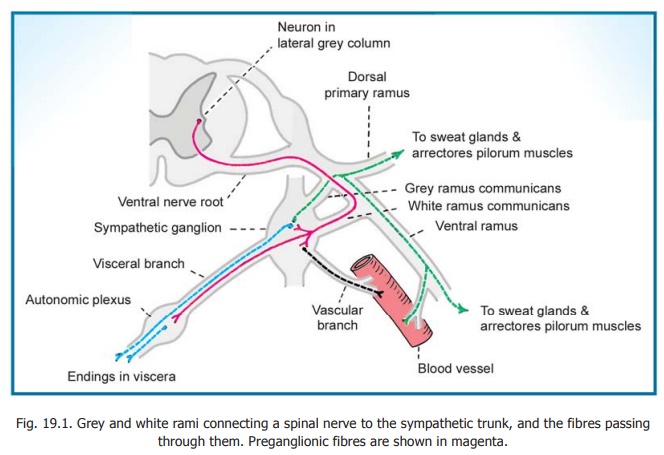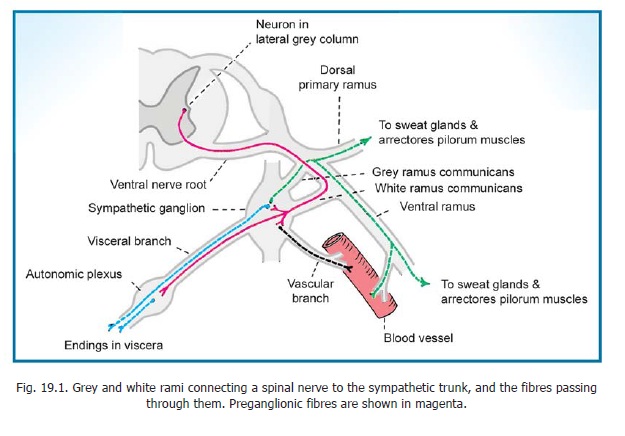Chapter: Human Neuroanatomy(Fundamental and Clinical): Autonomic Nervous System
The Sympathetic Trunks - Autonomic Nervous System

THE SYMPATHETIC TRUNKS
The sympathetic trunks (right and left) are the most easily seen parts of the autonomic nervous system. They are placed on either side of the vertebral column. Above, they extend to the base of the skull; and below, to the coccyx. Each trunk bears a number of enlargements placed along its length. These are the sympathetic ganglia. The number of ganglia is variable. Generally there are three (superior, middle and inferior) in the cervical region; eleven in the thoracic region; four in the lumbar region; and four in the sacral region, so that in all there are twenty two or twenty three ganglia on each trunk. The inferior cervical ganglion and the first thoracic are often fused to form a large stellate ganglion.
The sympathetic trunks are connected to the spinal nerves by a series of communicating branches or rami communicantes. These are of two types, white and grey. The white rami consist of myelinated fibres, while the grey rami are made up of unmyelinated fibres. The white rami carry fibres (originating in the spinal cord) from the spinal nerve to the sympathetic trunks. They are present only in the thoracic and upper lumbar regions. The grey rami carry fibres from the sympathetic trunk to spinal nerves. All spinal nerves receive grey rami. The fibres of the grey rami are distributed to peripheral tissues through the spinal nerves. The sympathetic trunks also establish communications with several cranial nerves through branches arising from the superior cervical ganglion.

In addition to communicating branches, the sympathetic trunks give off branches for supply of blood vessels and of viscera. The visceral branches are directed medially (Fig. 19.1) and take part in forming a series of autonomic plexuses in the thorax, abdomen and pelvis. Branches to peripheral parts of the body follow one of two routes. Some branches from the sympathetic trunks reach blood vessels directly and form perivascular plexuses on them. One such branch arises from the cranial end of the superior cervical ganglion and forms a plexus around the internal carotid artery. Other sympathetic fibres reach blood vessels (specially in the limbs) after running for part of their course through spinal nerves and their branches (Fig. 19.1).
Apart from supplying the blood vessels themselves, these sympathetic fibres innervate sweat glands and arrectores pilorum muscles of the skin.
Related Topics